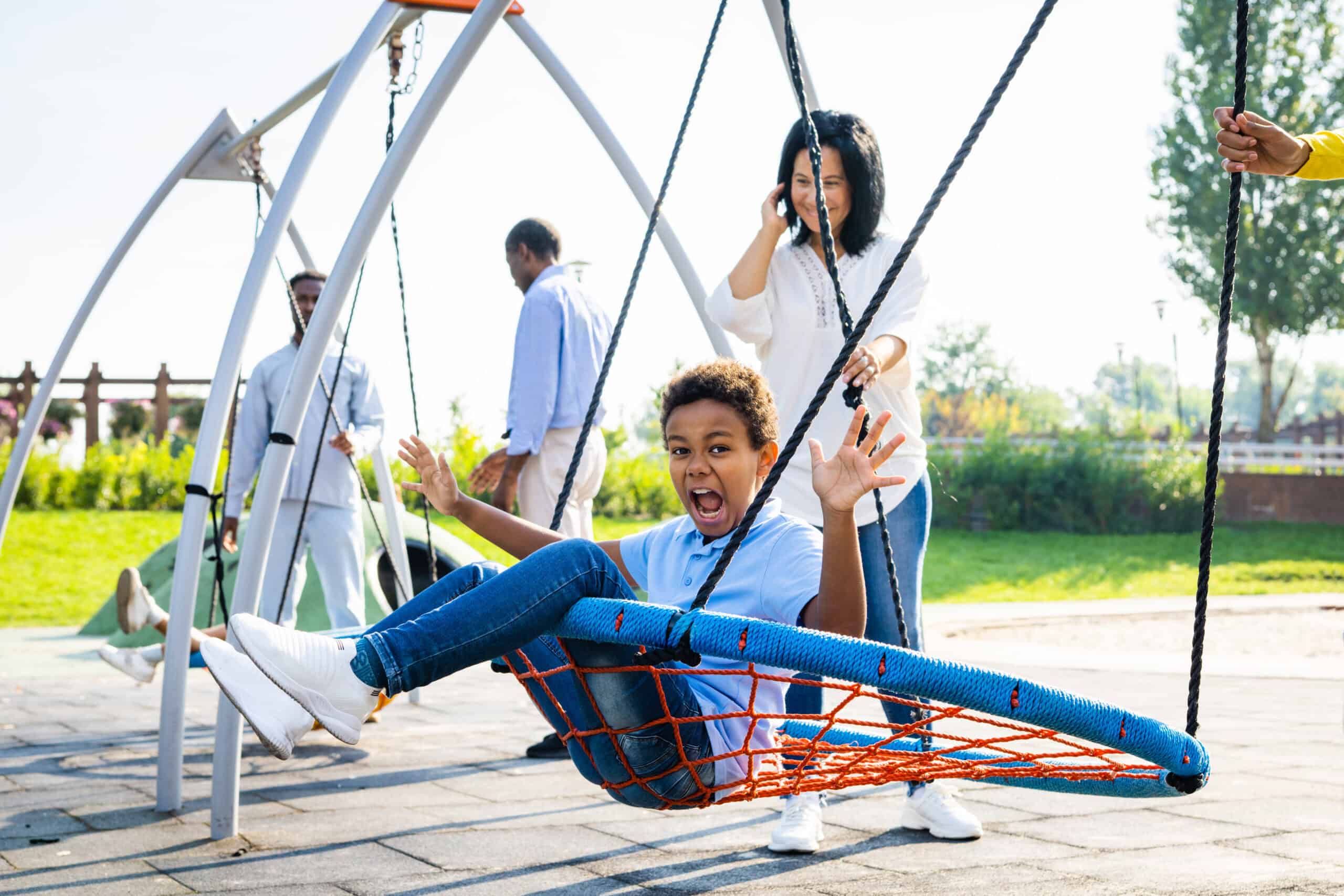Have you ever watched a child turn a stick into a sword or a pile of blocks into a castle?
The Transformative Role of Play in Child Development
When a child is moving around, playing, learning about themself and about the environment around them – they are building their brain’s infrastructure. It’s important to stimulate children, to get them moving and interpreting the world through play and movement.
We can do that by nurturing serve and return interactions, being responsive to their needs, or expanding their world knowledge through play.
Engaging in various forms of play helps children build neural connections, develop emotional intelligence, and acquire essential life skills (learn how to support children’s emotional regulation through neuroscience-backed strategies in The Science of Emotional Resilience).
Neuroscience Insight
When children engage in play, their brains are literally being wired for learning. Neuroscience shows that play stimulates the formation of synapses – the connections between brain cells – especially in the early years (4).
Each playful experience strengthens these connections, laying the groundwork for attention, memory, emotional regulation and problem-solving later in life. The richer and more varied the play, the more complex and resilient the brain becomes.

The Brain-Building Power of Diverse Play
The number of connections between brain cells and the quality of those connections is dependent on the experiences the child is exposed to (4).So, the more varied experiences a child encounters, the better they are able to build their brain.
In teaching, play is often seen as unproductive, wasted time and energy. However, research shows that appropriate play with parents, teachers, and peers is an amazing opportunity to promote the social, emotional, cognitive, language, and self-regulation skills that build executive function and a prosocial brain (1, 5).
Diverse Types of Play and Their Impact on Development
Play has been categorised in many ways and there are a lot of different types of play. Let’s explore more about some of them.
1. Physical / Locomotor play – Increasing motor skills and health
This type of play involves a wide range of movements such as running, jumping, throwing or kicking a ball, skipping, swinging, chasing, climbing, leaping and riding a bike or scooter. These skills improve children’s balance, agility, flexibility, strength and stamina. It also promotes a healthy lifestyle in children and strengthens their muscles, bones and joints.
2. Language / Communication play – Building linguistic skills
This type of play involves words, phrases, facial expressions, gestures, sounds and body language. Examples of this include playing with jokes, nonsense words, rhymes, impressions, songs, poetry, etc. All these things enable children to investigate and explore their language as well as develop their language comprehension and production.
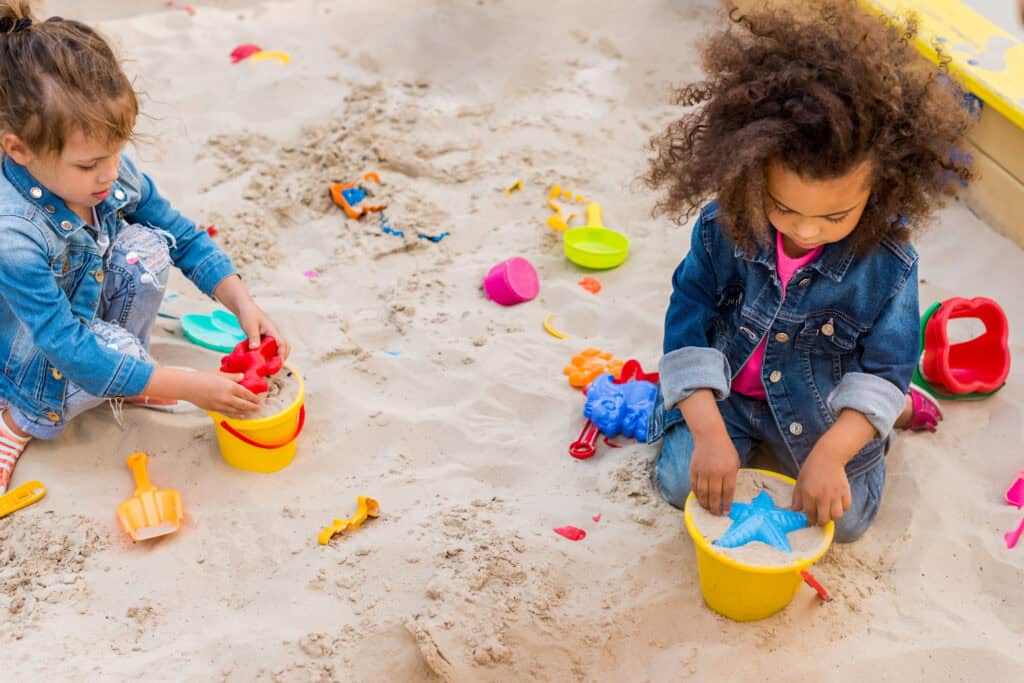
3. Exploratory play – Stimulating curiosity and sensory development
This type of play involves exploring different objects and finding out information about them by manipulating them (like taking a toy apart and trying to fix it or finding out how a musical box works). It can involve interacting with lots of different environmental features, like trees, bushes, tunnels, unusual structures, bricks, places to hide or get off the ground, mounds, and ditches. During exploratory play, children use their senses to smell, touch, and even taste things.
4. Constructive play – Encouraging problem-solving and creativity
This type of play involves construction toys, like blocks, bricks, and magnetic tiles. Constructive play is important because it helps children develop their problem-solving skills, teaches them the importance of not giving up and trying again and increases their cognitive development. It also boosts their imagination and creativity. Explore storytelling as a powerful cognitive tool in The Power of the Hero’s Journey in Teaching Youth Resilience.
PAUSE AND REFLECT
What type of play did you gravitate toward as a child?
How did it shape the way you explore and solve problems today?
5. Fantasy play – Expanding imagination and emotional understanding
This type of play allows children to pretend in ways that are unlikely to occur in real life (like being a superhero or being chased by a dinosaur). It helps them to express their emotions and deal with the novelties of their environment by trying out different roles and relationships. Fantasy play also helps children explore boundaries between reality and unreality and encourages them to think outside the box. Discover how imaginative play builds brain architecture in How Children Learn to Connect: The 6 Stages of Play.
6. Social play – Developing interpersonal skills
This type of play involves interactions with others (adults and peers) and exploring social rules (like creating a club or having meaningful conversations). Social play has a lot of benefits, like understanding customs and rules, gaining new knowledge, developing processing and social skills, practicing cooperation and compromise, helping children express themselves, as well as experiencing the power of relationships.
7. Creative play – Fostering innovation and self-expression
This type of play involves experimenting and creating with a wide range of different materials but is far more than just giving children access to art and craft materials. It can be expressed in many ways and combined with other types of play when needed. A range of things like straws, paper plates, pom poms, feathers, wool, fabric scraps, pencils, paints, brushes and loose parts (like sticks, stones, pine cones, shells, acorns, leaves, driftwood) can give a child a lot of opportunities to reuse or recombine them to create anything they can imagine.
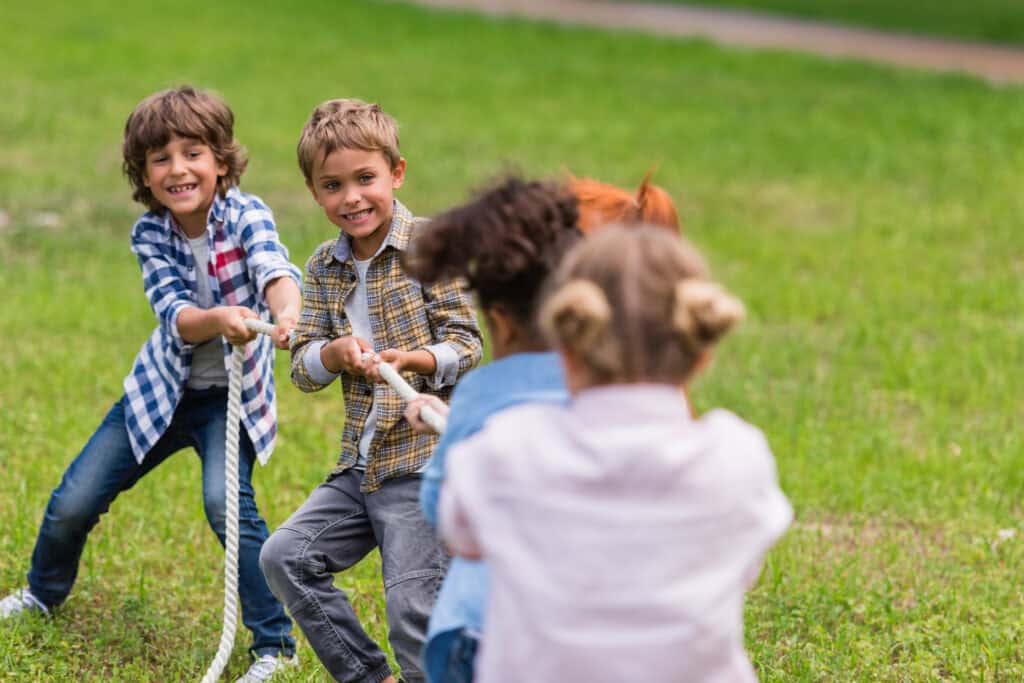
8. Rough and Tumble play – Building physical awareness and social bonds
This type of play allows children to take risks in a safe environment, which helps them gain the skills needed for communication, negotiation and emotional balance and develop a physical awareness of themselves and others. It also encourages the development of emotional intelligence. It can include fighting, tumbling, or tickling. Rough and Tumble play is the most misunderstood type of play (adults very often misinterpret it as aggressive behaviour) and because of that very often prevented by parents and teachers.
9. Outdoor play – Connecting with nature and increasing wellbeing
This type of play provides the opportunity to improve sensory integration skills and it is important for a child’s physical health. Outdoor play activities involve the child as an active participant and is beneficial for developing fine and gross motor, cognitive, social and linguistic skills.
10. Object play – Understanding the physical world
This type of play involves hand-eye manipulations of objects which allows children to gain an understanding of how those objects work (like looking at pine cones and investigating them from each side). This can provide an excellent opportunity for meaningful conversations and further exploration and discovery. It is also a great way to boost fine motor development and hand-eye coordination.
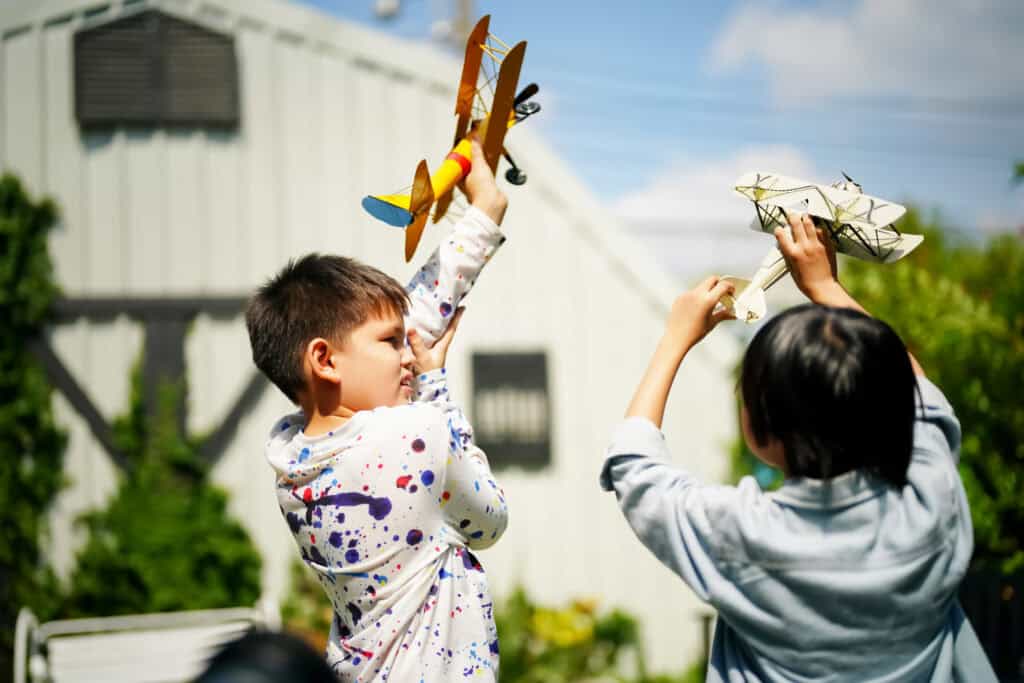
Cultural Connection
Across the world, the value of play is shaped by cultural beliefs – and these differences tell us a lot about what we prioritise in childhood.
In Finland, unstructured outdoor play is considered essential to learning, with schools scheduling long recesses to support emotional and cognitive wellbeing. In contrast, Japan emphasises social harmony through group play and cooperative games that teach children to navigate relationships and responsibilities from a young age.
These cultural approaches highlight that play is not just a personal experience – it’s a reflection of what each society believes children need to thrive.
11. Deep play – Encouraging risk-taking and resilience
This type of play encourages children to take risks, challenge themselves and face dangerous experiences (like riding a bike with no hands or balancing on a high beam). Deep play is probably the most challenging play type, but it has important benefits for children. It not only enables them to experience, manage and overcome risk but also serves a deeper need to feel the thrill of being alive and having conquered their fears. Children will gradually engage in this type of play on their own terms.
12. Dramatic play – Exploring roles and social scenarios
This type of play involves recreating characters and plot lines drawn from the child’s environment and experiences (like pretending to eat at a restaurant or pretending to be a pop star). Making up their costumes, painting their faces, preparing essential props, choosing the right music, decorating a stage and inviting their audience – all these things can characterise dramatic play. Dramatic play helps children develop turn-taking skills and cooperation. It is one of the most complex types of play.
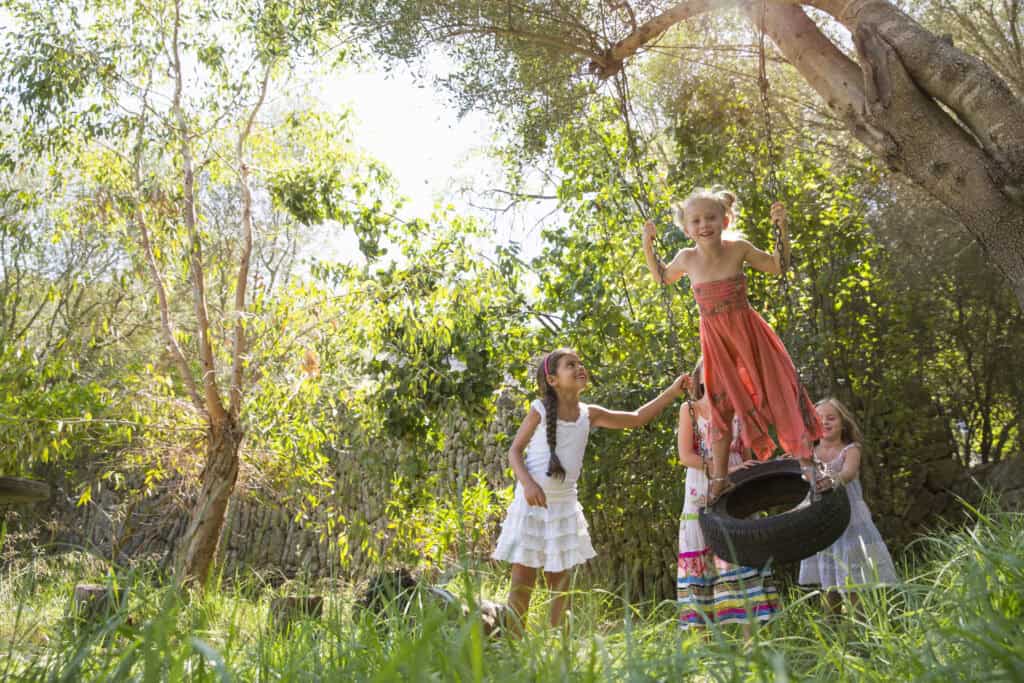
13. Symbolic play – Developing abstract thinking
This type of play involves using objects to represent other things (like using a stick to represent a sword or a round cushion to represent a wheel). Symbolic play helps children to develop the ability to use signs and the written word as well as their imagination, creativity, problem-solving skills, and adaptability.
14. Mastery play – Building competence and confidence
This type of play involves learning new skills and mastering them through control of the natural environment (like making a dam in a stream or building a bonfire). Often children repeat the same action over and over again until they master a new skill. It boosts children’s confidence, gives them a sense of accomplishment, and helps them feel comfortable in their environment.
15. Recapitulative play – Connecting with historical and cultural practices
This type of play involves engaging in rituals and exploring human history (like building a shelter or making and using weapons). It benefits children with a great connection to history and allows them to practice fundamental skills and instincts. The recapitulative play suggests that certain key behaviours are passed through our genes and are activated when children play in a particular way.

Actionable Steps for Parents and Educators:
Want to support your child’s development through play? Here’s how you can start today:
- Rotate play opportunities: Offer a mix of materials and environments – indoor, outdoor, quiet, energetic – to activate different areas of your child’s brain.
- Join in (then step back): Play alongside your child to model curiosity, then let them lead. Your presence builds connection, while your absence builds independence.
- Name the skill: Highlight what your child is learning (“You balanced so well on that beam – that’s great coordination!”) to reinforce development through encouragement.
- Say yes to safe risks: Instead of saying “be careful,” try “how will you do that safely?” to support confidence and decision-making.
- Protect unstructured time: Avoid overscheduling. Boredom often leads to the most creative play and problem-solving moments.
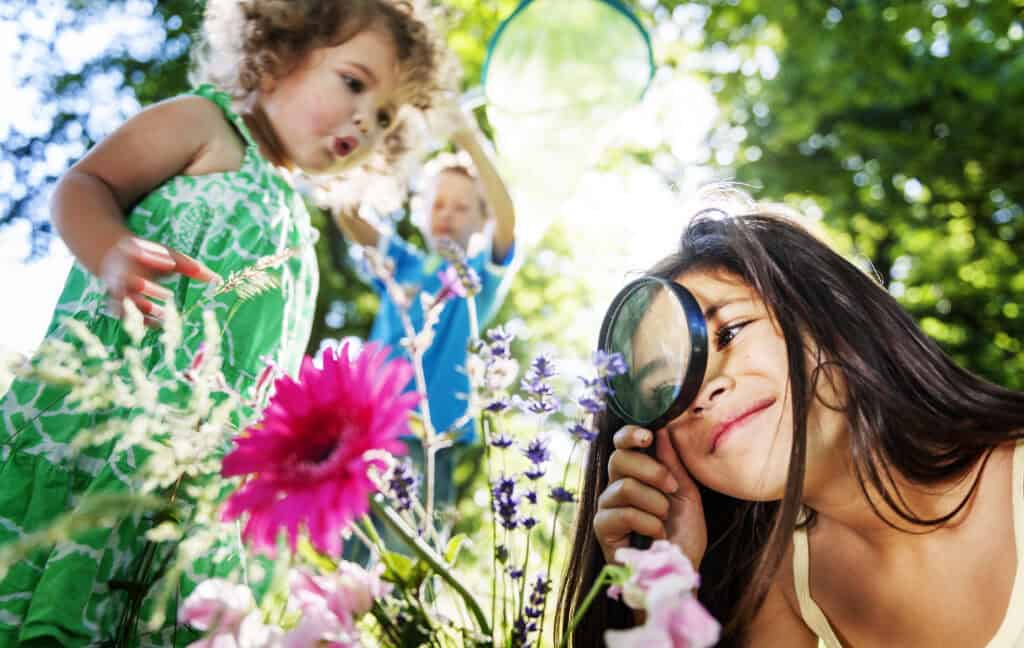
Free Resources to Support Meaningful Play
Want to take the next step in nurturing your child’s development? We’ve created a collection of downloadable resources to help you bring the science of play into everyday life. All tools are free to our subscribers — just sign up here to access them anytime.
- Types of Play Checklist – A simple printable to help parents and educators identify and encourage different types of play across a child’s day.
- Monthly Play Activities – A rotating set of ideas for home and classroom environments that support creative, physical, and emotional play.
- 8 Senses Scavenger Hunt – A nature-based activity that helps children explore their senses outdoors, building sensory integration and calm awareness.
- Play Ideas From Around the World – Inspire diverse play experiences by learning how different cultures approach playtime.
- Emotions Flashcards – Support emotional literacy by helping children name and navigate their feelings through expressive play.
All resources are developmentally informed and ready to print or share with families and support networks.
Embracing the Power of Play
Every type of play supports children in building safe, stable and nurturing relationships with parents and teachers. These are skills that all children need in order to thrive.
Appropriate adult participation (and scaffolding) can be very beneficial for both adults and children because play influences all areas of development.
Through playful exploration, children create new neural pathways, laying a solid foundation for their learning and growth.

Reflect
Know someone who’d love this? Forward this blog post to a fellow parent, educator, or caregiver who values play.
Or share your favourite childhood play memory with NeuroChild Village community—it might spark a new one today.
References:
- Hughes B., (2002). A Playworker’s Taxonomy of play types, 2nd edition, PlayLink
- Gordon Biddle K. et all, Early Childhood Education: Becoming a Professional, Chapter 10: Play and the Learning Environment, SAGE Publications (https://www.sagepub.com/sites/default/files/upm-binaries/53567_ch_10.pdf)
- Lee S.H. at all, (2022). Development of a Social Play Evaluation Tool for preschool children, Healthcare, 10, 102 (https://doi.org/10.3390/healthcare10010102)
- Yogman M. et all, (2018). The Power of Play: A Pediatric Role in Enhancing Development in Young Children, American Academy of Pediatrics (https://doi.org/10.1542/peds.2018-2058)
- Clabough, E., (2019). Second Nature. How parents can use neuroscience to help kids develop empathy, creativity, and self-control, Sounds True
This piece was written for you by
A Specialist in Music, Culture and Child Development / Chief Creative Officer at Neuro
Monika is a specialist in music, culture and child development, dedicated to exploring how music shapes cognitive growth, language acquisition, and emotional wellbeing. She guides parents and educators in using the power of music to support children’s learning, growth and creativity. At Neuro, she contributes research-driven content that connects neuroscience, education, and the arts, fostering a deeper understanding of music’s role in holistic development.
